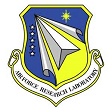AFRL posts BAA for Emerging Computing Architectures and Applications
 On June 19, the Air Force Research Laboratory posted a broad agency announcement (BAA-RIK-14-05) for Emerging Computing Architectures and Applications. The agency recommends that white papers be submitted by March 1, 2018, for FY 18 funding consideration.
On June 19, the Air Force Research Laboratory posted a broad agency announcement (BAA-RIK-14-05) for Emerging Computing Architectures and Applications. The agency recommends that white papers be submitted by March 1, 2018, for FY 18 funding consideration.
The Information Directorate, High Performance Systems Branch, of the Air Force Research Laboratory (AFRL), Rome Research Site, is soliciting white papers under this announcement for innovative technologies to explore and develop computational capabilities with greater sophistication, autonomy, intelligence, and assurance for addressing dynamic mission requirements imposed by Command, Control, Communications, Computers, Intelligence, Surveillance and Reconnaissance (C4ISR) applications and Size Weight and Power (SWAP) constrained Air Force platforms.
Of particular interest are emerging technologies that can provide revolutionary computational capabilities which enable greater system adaptability, autonomy and intelligence while improving information availability throughout the C4ISR enterprise. This includes quantum algorithms, computing architectures that improve energy efficiency, architectures that support computational intelligence and neuromorphic computing, architectures for embedded processing, architectures for high-performance computing which improve performance & enable increased system functionality, tools to increase the productivity of developing applications, methods and architectures that can provide dramatic improvements in the performance/cost of systems. Also of interest are technologies that can reduce warfighter decision latencies/response time, decrease system costs and system development times.
The overall objective of this BAA is to research, develop, and demonstrate emerging computing technologies and applications. This involves performing research and development in the following technical areas:
(1) Quantum Computing
(2) Nanocomputing
(3) Computational Intelligence and Neuromorphic Computing
(4) Resource Analysis of Cognitive Process Flow Used to Achieve Autonomy
(5) High Performance Computing
(6) Modular Embedded Computing Architectures
Full information is available here.
Source: FedBizOpps








